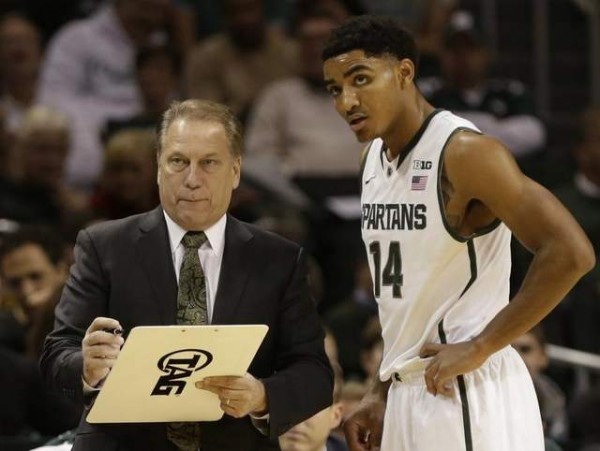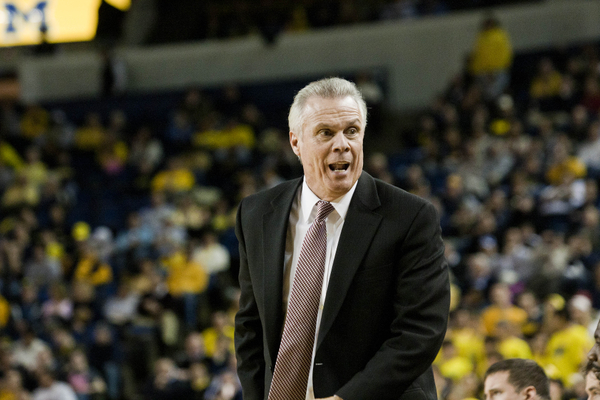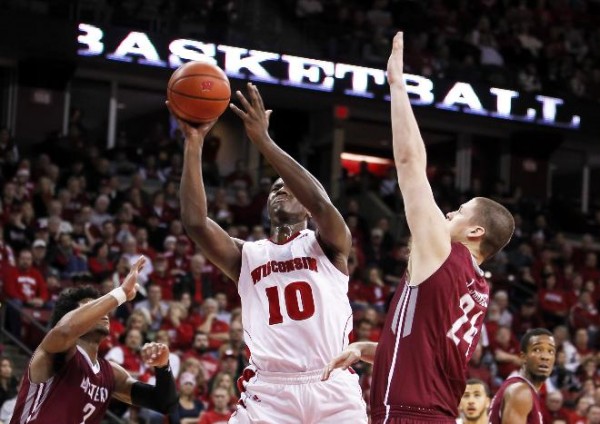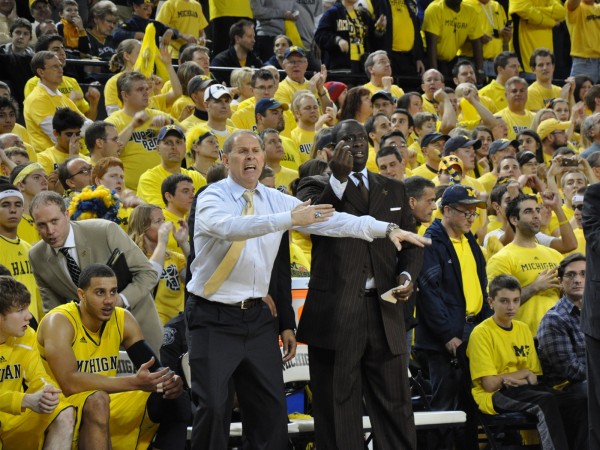Three Questions on Ohio State at Michigan State
Posted by Jonathan Batuello & Deepak Jayanti (@dee_b1g) on January 7th, 2014The Big Ten already gave us a Top 25 match-up over the weekend, but tonight it rewards us with a top five game, as No. 3 Ohio State travels to No. 5 Michigan State for a 9:00 PM tip at the Breslin Center. Both teams started the conference slate at 2-0 and this game could be instrumental in how the race eventually shakes out. This is especially important when you consider that both of these teams will play Wisconsin only once at the Kohl Center (Bo Ryan thanks the schedule-makers), so any loss is huge. To get ready for the Big Ten’s biggest game of the year so far, Big Ten microsite writers Deepak Jayanti and Jonathan Batuello got together to answer three key questions going into the game.
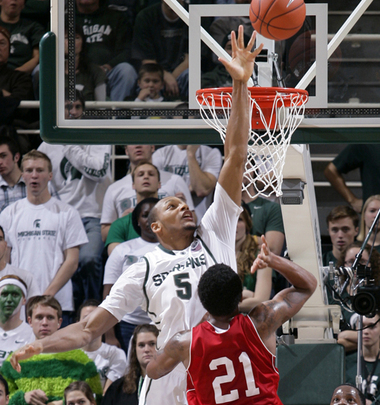
Adreian Payne will be key inside for the Spartans as they host Ohio State in the biggest game of the young Big Ten season tonight (AP Photo/Al Goldis).
1. Michigan State likes to get into transition while Ohio State would prefer to win with its defense. So, who sets and controls the pace in this game?
- Deepak Jayanti: Last season, the average number of possessions over the three games between these two teams was 60. The average number of possessions per game in Division I basketball was 65.1, so clearly things tend to slow down when these two defensive-minded teams face off. The Buckeyes’ depth at the guard position will create issues for Michigan State’s Keith Appling because there will be fresh legs guarding him throughout and preventing him from picking up the tempo in transition. Between Aaron Craft, Shannon Scott and Sam Thompson, Thad Matta will rotate his guards against the Michigan State backcourt to help dictate the overall tempo. Without those easy transition baskets, Appling will have to beat Craft off the dribble in the half-court which could be challenging and give an advantage to Ohio State in this game.
- Jonathan Batuello: Michigan State would love to have its guards get out on the break to limit Ohio State’s defense getting set, but it’s likely that this game will slow down. The biggest reason for this is that both teams play smart offensive basketball that leads to highly efficient scoring. It is much more challenging for teams to get out in transition when your opponent converts, and Ohio State boasts an effective field goal percent of 53.7 percent (45th nationally) and Michigan State is even better at 55.2 percent (18th). For Sparty to push tempo it needs turnovers and missed shots, and Ohio State doesn’t commit many miscues (approximately 10 per game) nor have many ice cold shooting nights. Therefore, expect Michigan State to focus on winning the game using smart possessions instead of trying to create extra ones.






























